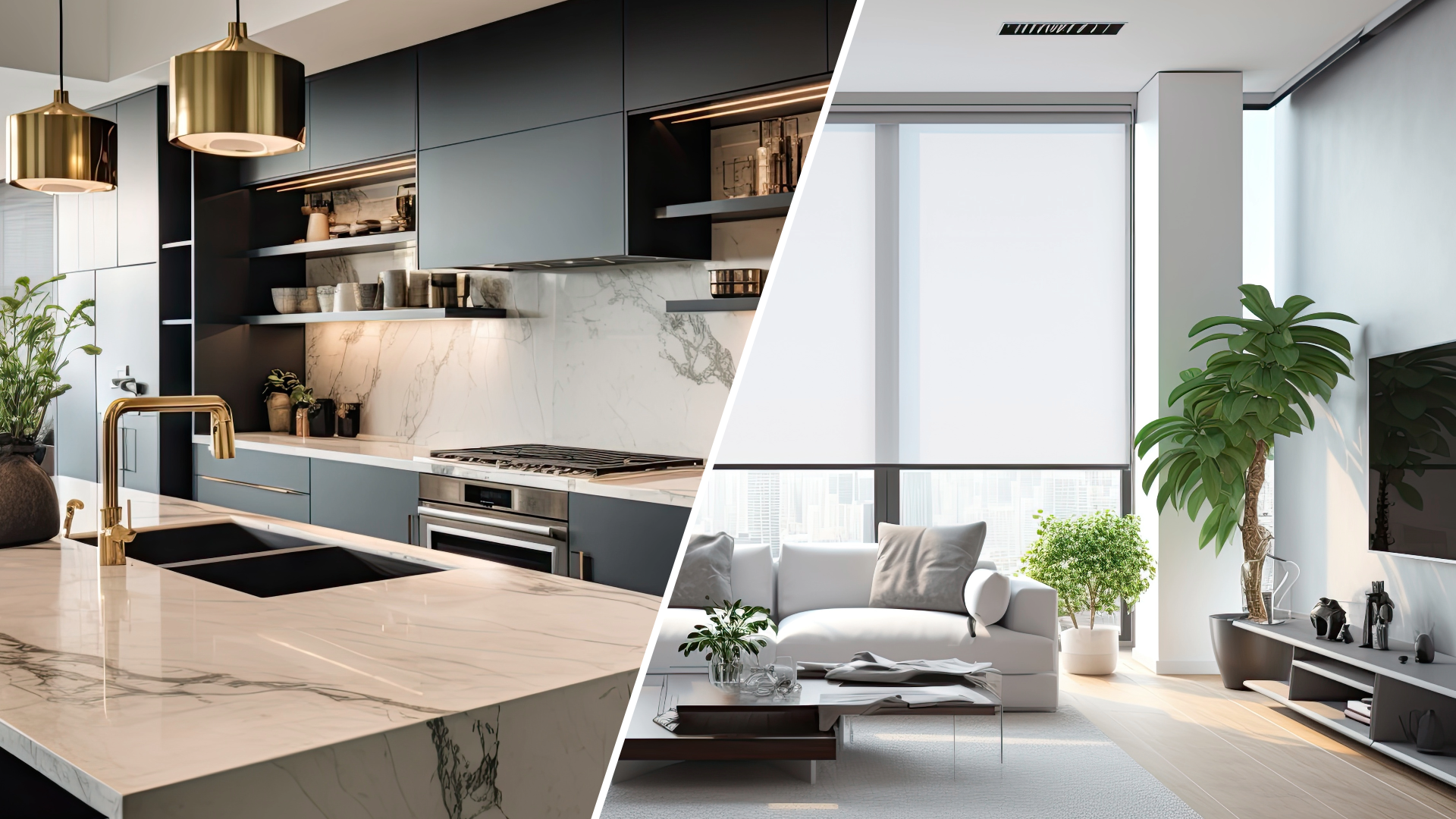The final few weeks of any year are always a popular time for forward-looking reports and research to drop. Within the past few days, we were hit with two such releases that, while they came from different organizations, were conveniently aligned.
The first was the 2024 edition of the National Kitchen & Bath Association’s Kitchen Design Trends Report, and the other was a Home Design Report from Consumer Insights Now, the research arm of Home News Now. The approach each organization took to compile their reports was different – NKBA leaned on designers within its membership while CIN took the consumer route – but the findings of both offer a unique look into the ways these areas of the home are evolving. Most importantly, the information offers retailers the opportunity to plan ahead as they look to offer consumers solutions that fit their wants and needs.
Both reports offer up an incredible amount of data that even the nerdiest of number lovers could get lost in. But there are a few high-level points from each that are worth highlighting for the independent retailer.
With that said, let’s dive into them.
In the Kitchen
Designers in the NKBA’s report said consumers are looking to create quiet, well-lit cooking spaces that promote health and wellness. There’s a lot to unpack in that statement, but here’s how that breaks down:
Quieter appliances. Non-cooking noises in the kitchen come from two main sources: appliances and cabinets. A running dishwasher that sounds like a car engine and kids slamming those doors shut with enough force to register on the Richter scale. However, with more homeowners looking to create a multifunctional space that supports food making, entertaining and the work-from-home lifestyle, quiet is key.
And consumers are asking for that in their kitchens. According to NKBA, 65 percent of designers said their clients want ultra-quiet dishwashers while another 41 percent said they are opting for pull-out receptacles over noisy trash compactors. Soft-shut drawers and cabinets are also a must in today’s kitchens.
Healthier appliances. At the end of the day, the kitchen’s main function is still for storing and cooking food in the home. And designers note that today’s consumer wants to create a space that is focused on their health and wellness. To that end, 78 percent of designers said that homeowners want more refrigeration space that also offers flexibility (columns, drawers, convertible, etc.). Another 68 percent said their clients desire appliances that include functions like air frying and steam cooking.
It’s (well) lit. Lighting always has and always will be a major focus in the kitchen. And while lots of natural light will always be at the top of any homeowner’s wish list, designers are finding ways to incorporate more lighting features into the kitchen. According to NKBA’s report, some of the ways designers are folding additional layers of lighting into the kitchen include ambient lighting to create various moods (85 percent), decorative statement lighting to showcase design elements (80 percent) and nighttime lighting for safety and aesthetics (69 percent). Further, lighting tech is continuing to gain traction with designers integrating things like motion sensors, voice activation and programmable control options.
In the Rest of the Home
Design trends – especially in the furniture category – seemingly change from month to month or even survey to survey. Consumer Insights Now, however, had a really strong, well-represented polling of nearly 1,900 consumers for its report. The publication slowly released portions of the report (we recently highlighted one of those segments that dove into furniture shopping habits) with the latest diving into consumers’ desires around design. In addition to the type of style they aspire to, CIN also asked people in the market for furniture how they tend to decorate different rooms and their preferred color pallets. And all info could be looked at across a number of factors, including age, location, income level and so on.
Staying stylish. At a high level, the report found that today’s consumer most commonly describes their style as minimalist (46 percent), followed by modern farmhouse (22 percent) and coastal (20 percent). Rather ironic is the fact that, while consumers prefer a minimalist style, three-out-of-four consumers report that clutter is an issue.
Where the data gets interesting, though, is when you look at how consumers say they style their home, by generation. Overall, it’s almost a dead split with 52 percent of consumers saying they prefer to vary their style by room – the remaining 48 percent say they like to keep a consistent style throughout. But looked at by age class, the younger the consumer, the more likely they are to want to keep a consistent style.
Gen Z, the youngest consumer surveyed, was most likely to want to maintain consistency in style throughout their home or apartment (55 percent) followed by younger Millennials (50 percent), older Millennials (46 percent), Gen X (45 percent) and Boomers (42 percent).
Color combos. While they can’t agree on one style of the whole home, consumers are pretty consistent when it comes to their color preferences by room. Neutrals and Whites ranked one-two across every room in the home, according to CIN’s report. Browns and Blues were the next most-common colors, with Blues ranking higher in the living and primary bedroom while Browns were preferred in the family and dining room. Greens were a consistent fourth across all rooms. Blacks only appeared in the family and primary bedroom but sparingly.
HGTV U. It’s probably not surprising to the average furniture retailer reading this that younger generations are more likely to pay attention to design trends. Overall 32 percent of the consumers surveyed said they believe it’s important to stay on top of the latest trends, but Millennials were significantly more likely to pay attention to those trends, according to CIN.
As for where they get their information, 46 percent of consumers (particularly Millennials at 49 percent and Gen X at 50 percent) turn to HGTV. Boomers (47 percent) and Gen Z (46 percent) are more likely to turn to their family or friends. Other popular methods include watching other TV decorating shows (39 percent), visiting furniture retailer websites (38 percent) and heading to brand websites (32 percent).
Data also pointed to the generational shift happening with print vs. digital media. While 56 percent of Boomers report reading home magazines for their design news, just 25 percent of Gen Z go that route. On the other hand, 33 percent of Gen Z follows home influencers or furniture retailers on social media compared to just 18 percent of Boomers.




